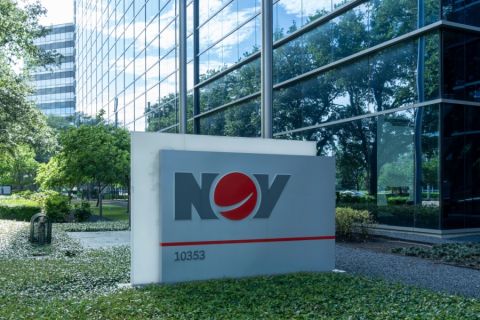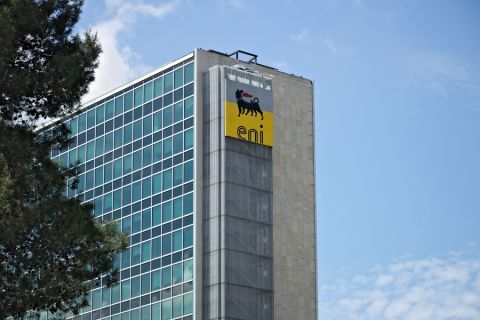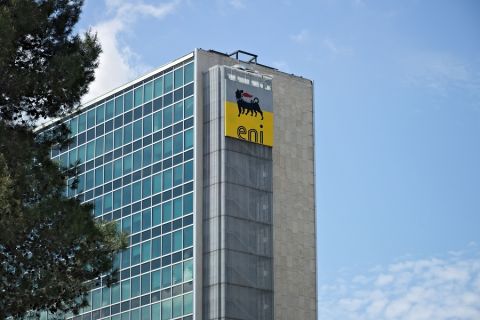Technology provides collaborative framework for seismic interpretation
ARK CLS released a new data collaboration technology called GeoDataSync. Bringing order to the workflow, the technology allows interpreters to use multiple interpretation systems within the same unified workflow, the company said in a press release. Data also can be accessed without the need to copy them, removing the need to make copies of large seismic 3-D data volumes and reducing storage costs. The initial implementation of the technology has been developed as a plug-in to Petrel seismic-to-simulation software. Through a separate plug-in, GeoDataSync also will allow users access to 3-D seismic data volumes and other data stored within dGB Earth Sciences’ OpendTect interpretation system. GeoDataSync’s key features and benefits include collaborative working and easy synchronization between multiple data sources, improved data management and reduced storage costs, increased asset team productivity by ensuring that all team members have access to the right data, leveraging previous investments by supporting data access from legacy systems and by incorporation of historical data into the current interpretation workflow, and easy migration and reduced data corruption risks. arkcls.com.
BOP can withstand high-pressure kickbacks, improves safety
Oil Lift Technology Inc., part of Norris Production Solutions, announced in a press release the addition of its new Dual Ram 5,000-psi Rod Lock BOP to its line of progressing cavity pumping equipment. The new tool, with incorporated blind ram, is engineered for rod pump applications subject to fracturing pressures from nearby fracturing wells and provides this emerging market segment with a tool to easily close off wells for streamlined and safe servicing. In addition, the tool’s enhanced psi rating also enables the rod lock to withstand the high-pressure kickbacks that are common to shale oil and coalbed methane gas production environments. The tool features two separate sets of well-closing rams. The first of these uses Oil Lift’s rod lock design, which has the ability to hold 25,000 lb of rod weight and prevent torsional rotation to 1,000 ft-lb. The second is a blind ram with the ability to seal the well when a polished rod is not present. Certified to seal wellbore pressures to a maximum of 5,000 psi, the new technology makes it possible for progressing cavity pumps to be safely added to wells that consistently face high-pressure conditions. npsdover.com/oillifttechnology.
Fluid service accurately analyzes fluids downhole
Halliburton introduced its Integrated Computational Element (ICE Core) fluid analysis service. Previously, optical analyzers could tell an operator when a sample was pure enough to collect, but rarely could they identify which fluid components were present and in what proportions, according to a Halliburton press release. ICE Core fluid analysis technology, which is a component of Halliburton’s Reservoir Description Tool, delivers this information, the company said. The new technology is well suited for downhole fluid analysis including applications in deep water, exploration, sample validation, fluid analysis between samples, where flow assurance is an issue, when mapping water floods, when determining reservoir connectivity, when determining compositional grading of reservoir fluids, and to see if fluids are changing. The fluid analysis technology works via light shining through downhole fluids and then through ICE Core sensors. Each sensor is programmed to recognize the chemical nature – or optical fingerprint – of a specific fluid component such as methane, ethane, propane, aromatics, saturates, or water. Measuring the intensity of light passing through any one sensor indicates the presence and proportion of a particular chemical component within the overall fluid. Because the technology relies on photometric detection instead of spectroscopy, it does not require a computer to perform calculations on an optical spectrum. Each sensor is designed to respond specifically to the fingerprint of the selected analyte using all of the information in the optical spectrum. halliburton.com/rdt.
Water treatment system cost-effectively kills bacteria
Bosque Systems LLC’s DIONIX system treats pre-frac, flowback, and fresh water to be used in support of the process of hydraulic fracturing, the company said in a press release. The mobile water treatment system for the oil and gas industry uses a two-precursor chemical process to produce chlorine dioxide rather than a three-precursor process. The two-precursor chemical process provides the safest way to produce chlorine dioxide on site, killing 100% of all bacteria in the water, and it is recognized by the US Environmental Protection Agency as a green biocide. The reaction time is immediate, and all bacteria are eliminated from the water within seconds. This process does not generate trihalomethanes, does not affect the pH of the fluid, changes the oxidation rate of iron (FEto FE), and does not chlorinate. It is not corrosive and therefore preserves pipelines and wells. bosquesystems.com.
Multidimensional cutter can improve drilling performance
Baker Hughes Inc.’s StayCool multidimensional cutter can help operators drill to total depth faster and more cost-effectively by extending cutter life and footage per run. Used exclusively on the Hughes Christensen Talon platform of polycrystalline diamond compact bits, these cutters incorporate a contoured diamond table, wear-resistant diamond materials, and new interface designs, according to a Baker Hughes press release. In challenging environments such as interbedded sandstones and carbonates, bit performance is directly related to cutters and their ability to withstand heat. Overheated cutters experience abrasive wear faster, which can lead to lower ROP and higher mechanical specific energy, or wasted energy that is not directly transferred into removing rock. The StayCool cutter’s patent-pending contoured design can reduce friction, maintain a sharper cutting edge throughout the bit run, and reduce mechanical specific energy. Laboratory testing has shown that the cutters generate 20% less heat on the cutter face than conventional flat-surface cutters. Less heat minimizes cracking tendencies on the diamond table that can lead to failures and shorten run life. As a result, run lengths are extended, and the cutters remain aggresive while enabling the bit to maintain higher ROPs throughout the bit run. bakerhughes.com.
Ball-activated sleeve allows more efficient fracturing in horizontal wells
TEAM Oil Tools Inc. has developed the ORIO XL ball-activated fracturing sleeve for use in multistage completions, according to a company press release. Designed for 5 1/ 2 -in. production casing, the technology allows operators to fracture extended-reach horizontal wells in a more efficient manner by stimulating a single cluster at a time. This ensures that proppant is getting into every cluster and increases the possibility of greater production. Traditionally, the number of frac sleeves that could be run was limited due to the inherent design of the tool, according to Steve Chauffe, director of new technology at TEAM Oil Tools. In most cases, the maximum number of frac sleeves that could be run in a wellbore was between 30 and 50. The ORIO XL allows an almost infinite number of sleeves that can be run and opened individually due to the tool’s unique design. The new technology allows completion in laterals in excess of 3,048 m (10,000 ft). Additionally, the sleeve technology is not susceptible to cement contamination, erosion in fracturing jobs, or premature shifting of the sleeve. teamoiltools.com.
Recommended Reading
Keeping it Simple: Antero Stays on Profitable Course in 1Q
2024-04-26 - Bucking trend, Antero Resources posted a slight increase in natural gas production as other companies curtailed production.
NOV Announces $1B Repurchase Program, Ups Dividend
2024-04-26 - NOV expects to increase its quarterly cash dividend on its common stock by 50% to $0.075 per share from $0.05 per share.
Initiative Equity Partners Acquires Equity in Renewable Firm ArtIn Energy
2024-04-26 - Initiative Equity Partners is taking steps to accelerate deployment of renewable energy globally, including in North America.
Repsol to Drop Marcellus Rig in June
2024-04-26 - Spain’s Repsol plans to drop its Marcellus Shale rig in June and reduce capex in the play due to the current U.S. gas price environment, CEO Josu Jon Imaz told analysts during a quarterly webcast.
Ithaca Deal ‘Ticks All the Boxes,’ Eni’s CFO Says
2024-04-26 - Eni’s deal to acquire Ithaca Energy marks a “strategic move to significantly strengthen its presence” on the U.K. Continental Shelf and “ticks all of the boxes” for the Italian energy company.





